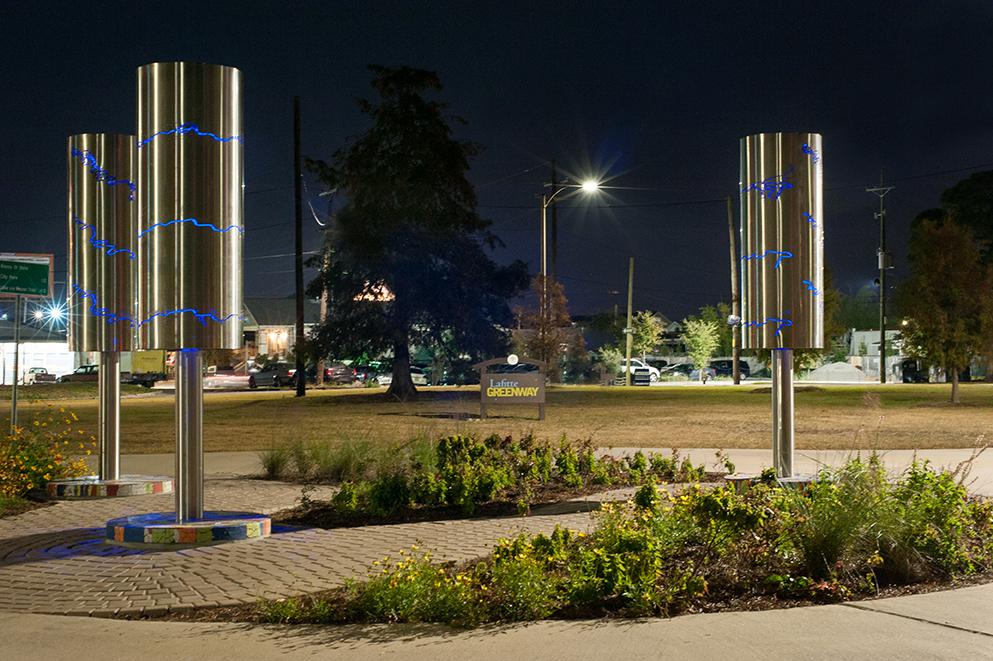Wonderful article by Hope Mills:
Some Excerpts from the article:
On a breezy Louisiana day, the spinning Tibetan prayer wheels at a corner of the Lafitte Greenway near St John’s Bayou will mesmerize you. The nine-foot-high stainless steel cylinders, etched with historical iconography from the Mississippi River, are arresting in how they cut into the skyline, the complicated stories they convey and the earth they rise up from.
The installation, the work of New Orleans artist Michel Varisco, isn’t just the commanding prayer wheels. It’s actually the entire area: the cylinders surrounded by a plant-lined footpath that meanders like the river itself. Varisco worked diligently to bring the natural element into her Lafitte. The act of first removing an invasive species of turbo grass without herbicide and then adding plants that have long known Louisiana soil became part of her artistic process—a symbol of reconnecting relationships that have been broken by human choices.
Nature has always served as both teacher and muse for Varisco. Plants, animals and birds were familiar presences in her growing up years. Sometimes she was studying them, sometimes drawing them, and sometimes rescuing them if the occasion called for it. Her relationship with the natural world was the beginning of an idea that there was a bigger connection humans were missing.
Pair that with the fact that Varisco grew up used to the juxtaposition of seeming opposites (her father was an engineer and musician; her mother a biochemist, culinary artist and teacher) and you have an artist constantly examining the relationships between humans and the world around them. Her work, like the nature world itself, can’t be confined to one single medium or idea. In college she experimented with photography, ceramics and printmaking, developing an artistic toolkit that allowed her to pull out whichever practice best responded to the idea at hand. Her work has traveled widely, resonating with audiences throughout the United States as well as the Netherlands, Russia and Europe.
Art, she has long believed, can shine a light on the darkest corners of the human experience. In some cases it may sprinkle seeds, at times ask probing questions, or in other cases, keep the light focused on an issue for a while. Art spurs the what if.

